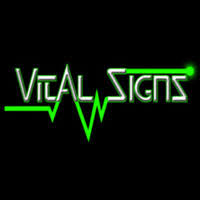 Temperature
Temperature
1. Oral
- Most accessible and convenient
- Normal value: 37 o C – 98.6 o F
- 2 – 3 minutes
2. Rectal
- Most reliable
- Normal value: 37.7 o C – 99.6 o F
- 3 – 5 minutes
3. Axila
- Less accurate
- Normal value: 36.4 o C – 97.5 o F
- 5 – 10 minutes
4. Tympanic membrane
- Directly reflects core temperature
- Normal value: 37.7 o C – 99.9 o F
- Automatic results
CONVERSION
- Fahrenheit to Celsius = (F-32) x 5/9
- Celsius to Fahrenheit = (C x 9/5) + 32
PULSE SITE
1. Temporal 6. Femoral
2. Carotid 7. Popliteal
3. Apical 8. Posterior tibial
4. Brachial 9. Dorsalis pedis
5. Radial
ü When palpating for pulse use 2 – 3 fingers except when taking the apical pulse use stethoscope
ü Apical pulse is in the 5th intercostals space
ü Landmark is the angle of Louie
ü 4th intercostals space left mid clavicular line child apical pulse
ü When using the stethoscope use the flat part when looking for high pitch sounds like (lung and bowel sounds) and use the bell for vascular or heart sounds
RESPIRATION
- Adult: 12 – 20 c/min
- Newborn – 30 – 60 c/min
ERRORS IN TAKING RESPIRATORY RATE
Patient Factor
ü Insufficient rest before assessing
ü Assessing immediately after a meal or while client smokes or has pain
Equipment Factor
ü Stethoscope fits poorly or hearing impaired
ü Bladder or cuff too wide
ü Bladder or cuff too narrow
Errors in technique
ü Arm unsupported
ü Arm above heart level and not perpendicular to the body
ü Cuff wrapped to loosely
ü Deflating cuff to slowly
ü Deflating cuff to quick
ü Failure to identify auscultatory gap
Auscultatory gap
ü Temporary cessation of sounds after initiation
ü Gap of 10 – 40 mmHg
ü Common among hypertensive
ü Repeating assessment too quickly (wait for 2 – 3 minutes after taking again the bp, and maximum of 3 takes same arm and if still inaudible rest arm for 5 – 15 minutes)
ü Multiple examiner using different Kortkoff sounds for diastolic readings
ü Failure to use the same arm consistently Effects
ü Erroneously high readings
False low systolic and false high diastolic
- False low reading
- False high reading
- Erroneously high readings
- Erroneously low readings
- False high readings
- False low diastolic reading
- False high diastolic reading
- False low systolic bp and diastolic bp
ü Inaccurate interpretation
ü Inconsistent measurements
ü For a client who’s blood pressure is to be taken for the first time, take the blood pressure of both arms
ü Difference of blood pressure for both arms should only be 10 mm Hg
ü Use higher value as baseline
PALPATORY SYSTOLIC PRESSURE
ü Point of pulsation stops with the use of stethoscope
ü Maximum pressure + 30 mmHg that is you limit when taking the blood pressure
KOROTKOFF SOUNDS
Phases
1. Characterized by a thud, thump and tapping sound
2. Swooshing, whoosing sound
3. Sound decrease in intensity when compared to Korotkoff one
4. Muffling sound
5. Disappearance of sound
- in adults record Korotkoff 1 and Korotkoff 5 of able to hear Korotkoff 4 record also
- in children record Korotkoff 1 and Korotkoff 4
HYPERTENSION
Average of 2 or more diastolic reading on at least 2 subsequent visits is 90 mmHg or higher or when an average of 2 or more systolic readings on at least 2 visits is higher than 140 mmHg
SYSTOLIC | DIASTOLIC | |
Optimal/ Normal Above Normal Hypertension Grade 1 (Mild) Grade 2 (Moderate) Grade 3 (Severe) | 120 – 129 130 – 139 140 – 159 160 – 179 Greater than 180 Greater than 140Less 80 | 80 – 84 85 – 89 90 – 99 100 – 109 Greater than 110 Less 90 |



0 comments:
Post a Comment